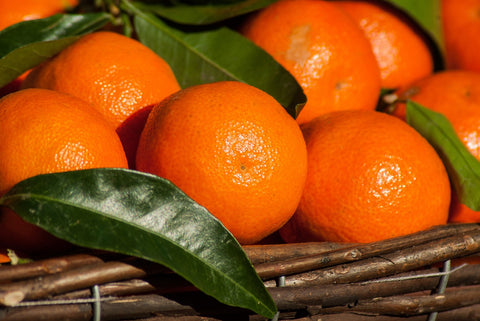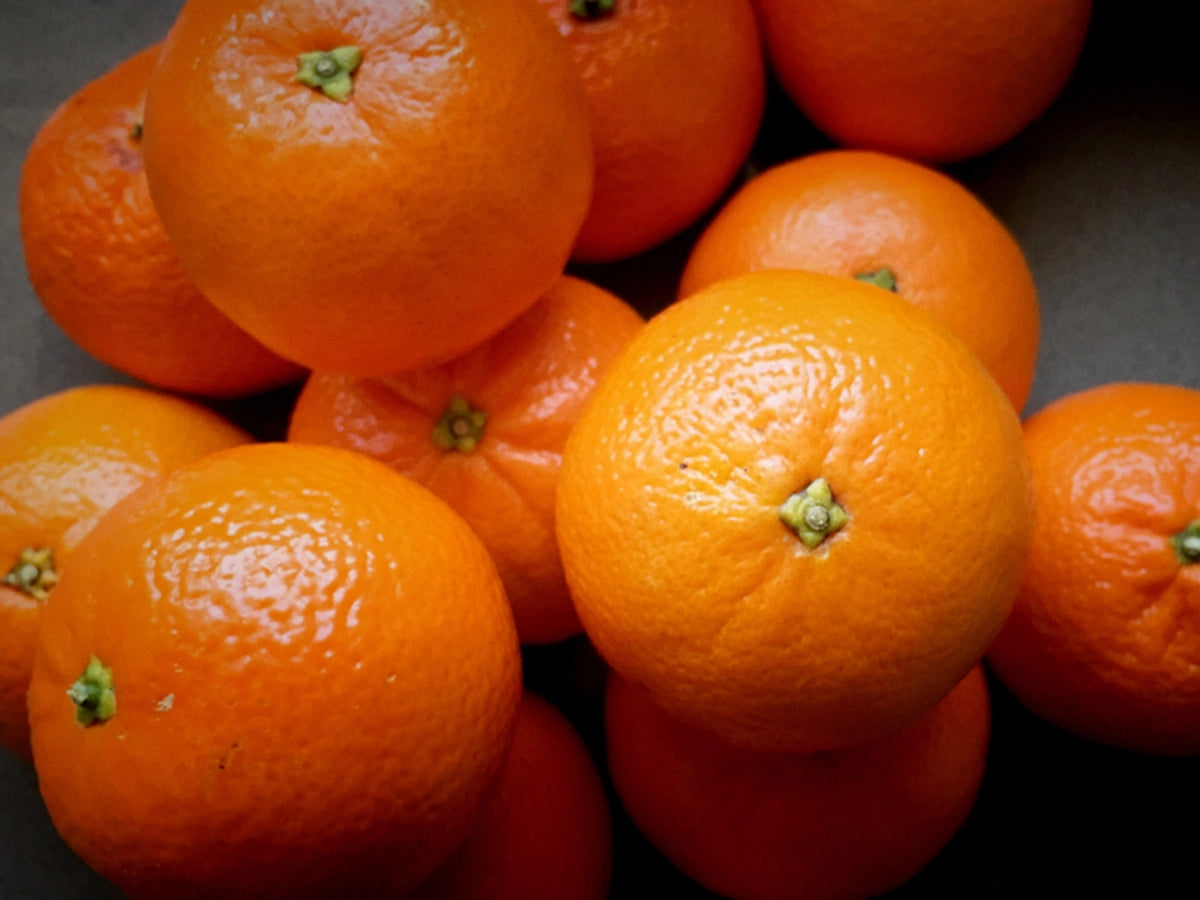How to Grow
Kinnow Fruit (Kinnu): How To Grow At Home Easily With Simple Steps
My taste is tangy
I am full of vitamin C
With nutrients inside me
I promise to keep up your immunity…
And if you thought I was orange – I fooled you again!
Who am I?
The subject in question is Kinnow – popularly known as the “king of fruits” in Punjab. This pulpy, luscious fruit, which many people mistake for an orange, is abundant in the winter fruit market.
Loaded with antioxidants and calcium content, kinnow is a perfect fruit that can enhance your metabolism, build stronger bones, and fight free radicals.
After COVID, each of us is more motivated to boost our immunity. Kinnow is a fruit that will help you achieve that.
What’s more?
Kinnow is not only about vitamin C and immunity; it also takes care of your skin.
You can grow it at home. This blog tries to walk you through the kinnow-growing process. We'll talk about these things: -
- What is kinnow?
- How to grow kinnow at home?
- Care tips for kinnow
- Benefits and uses of kinnow
So, let’s get started.

Kinnu is known as the ‘King of Fruits’ in Punjab
What is Kinnu/Kinnow?
The king fruit of Punjab, Kinnow, is a high-yield mandarin hybrid of ("King" Citrus nobilis and the "Willow leaf" Citrus Deliciosa). The hybrid was developed in 1915 by HB Frost at the University of California Citrus Experimentation Station. The fruit belongs to the Rutaceae family and has been widely cultivated in Punjab since 1935.
The popular citrus fruit is recognized for its appearance, pleasant flavor, taste, and color, high processing value, good yield, therapeutic applications, Vitamin C source, and high nutritional value.
Kinnow plant has strong growth and can reach up upto 35ft. The hot climate plant has high productivity. A mature kinnu plant can grow up to thousands of fruits every season. The kinnu fruits are green in color. When ready for harvest, it turns orange.
How to grow Kinnu/Kinnow at home?
Grow fresh Kinnow fruits at home
Now that you know about the juicy hybrid fruit, here's how you can grow it in your garden. We have assembled a step-by-step guide to growing the Kinnu plant at home.
- Take out the seeds carefully from a Kinnu fruit.
- Soak it in water for ten hours.
- If you find any seeds floating, take them out.
- Next, take the seeds out of the water and place them in a paper towel.
- Spread the seeds throughout the paper towel, and dry them out.
- It takes five to six hours for the seeds to dry.
- Once the seeds are dry, carefully remove the seeds' outer shell.
- Once the outer shell is removed, place the seeds in water.
- Place the seeds on a paper towel again. Make sure to keep them away from each other.
- Spray water over the paper towel and cover them with another paper towel.
- Please place them in a plastic bag.
- Place the plastic bag in a warm, dark place for seven days.
- After seven days, open the bag carefully; you will see that most seeds are sprouted.
- Take a mix of soil and fertilizer, and place the sprouted seeds carefully.
- Gently cover them with soil, and spray water.
- Finally, when the leaves come out, you can place them in a large pot or garden.
Once your plant starts to grow, with proper care, you can help it make fruits and enjoy the juicy, nutritious fruit at home.
Care tips for Kinnu/Kinnow
Caring is easy now that you have planted the Kinnow tree in your garden.
Plant Placement
Ensure your Kinnu plant is in a sunny area but protected from the wind. You can plant citrus trees in any season with adequate sunlight. The spring season is the best if you plan to grow it in a pot.
A standard-size tree must be placed 12 to 25 ft apart. The dwarf trees must be placed 6 to 10ft apart.
Water
The Kinnow plants require medium watering. However, ensure you use pure drinking water, or your fruits might get damaged. The amount of water depends on the season. If it's summer, your plant will require more water to keep the soil moist. For the winter season, the plant needs less water. Hence always check the soil moisture before adding more water to it.
Sunlight & Temperature
A kinnu plant grows best in sunny weather. The plant needs 5 to 6 hrs of direct sunlight. A minimum of 29 degrees temperature will help your plant's steady growth.
Fertilizer
Mix your soil with well-decomposed cow dung and urea to get the best results. After the plant grows, try to change 20% of the topsoil from your pot with a fertilizer mixture.
Care for Kinnow Tree
It is essential to cut the branches off. Make sure to loosen the topsoil every week for plant growth. Any new branch that comes out from the bottom of the tree is not suitable for the plant.
Benefits and uses of Kinnu/Kinnow
Kinnows are Vitamin C-rich nutritious fruit and are incredibly healthy. Here are some benefits of Kinnu fruit:
Vitamin C & bone strength
Among other citrus fruits, Kinnu has the highest Vitamin C and calcium. Kinnows help to make your bones strong.
Aids in digestion
Kinnu helps to increase digestion in the body. The fruit is rich in minerals and fiber and helps relieve gastrointestinal problems, acidity, and chronic constipation.
Rich in antioxidants
Kinnu is rich in antioxidants, which help to protect the body against cancer. It also helps to fight free radicals in the body and prevent diseases.
Healthy tissues and better immunity
Vitamin C helps in the development and growth of tissues and boosts the immune system in your body.
Aids in weight loss
The fruit also helps boost metabolism in the body, which helps with weight loss. It also helps to reduce bad cholesterol levels, improve good cholesterol levels, and keep your heart healthy.
Glowing skin
The minerals and vitamins in the kinnu have several benefits for your skin. It also has anti-aging properties, which make your skin beautiful.
Also, remember that Kinnu is rich in carbohydrates, which provide energy to your body cells, and improve their overall functions.
Conclusion
Kinnows are fresh, juicy fruits that help with indigestion. In winter, the fruit can help boost your body's overall health. The fruit has several benefits for your skin and health. With the above steps, you can easily grow and maintain a kinnu tree at home. Enjoy a glass of fresh Kinnow juice from your garden.
FAQs Related to Kinnu/Kinnow
-
What is the best time to plant Kinnow?
While you can plant the kinnow fruit at any time of the year, experts suggest the best planting season to be between the middle of June till the end of September.
-
What vitamins are present in Kinnow fruit?
Kinnow is a citrus fruit and rich in vitamin C. A 100ml juice of Kinnow fruit can provide 20mg of Vitamin C.
-
Is kinnow good for the heart?
Kinnow is good for the heart as it helps to reduce the levels of bad cholesterol in the body and boosts the levels of good cholesterol, thus preventing the chances of heart attack, strokes, and atherosclerosis.
-
Is Kinnow good for diabetes?
Diabetes is a chronic disease affecting the body's metabolism and overall health. The kinnow fruit is rich in fiber which helps in digestion. It also helps to control the absorption and release of sugar during slow metabolism.
-
What is the best time to drink kinnu juice?
The best time to consume Kinnu juice is one to two hours after breakfast. During this interval, one is neither too full nor too hungry.



